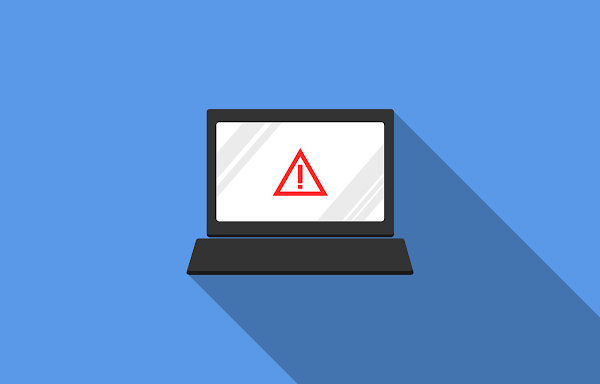Traditional Domain Name System (DNS) traffic, such as user requests to visit specific websites, has been largely unencrypted throughout the history of the internet.
This means that every party involved in the DNS value chain that your request goes through has the ability to examine your queries and responses, and even change them, whenever you look up a web address in the "internet telephone book." This is altered by DNS encryption, such as DNS over HTTPS (DoH).
Many of the major internet service providers, including Apple, Mozilla, Microsoft, and Google, have integrated encrypted DNS through DoH into their offerings. While Apple implemented DoH with the iOS 14 and macOS 11 updates in the autumn of 2020, Mozilla was an early adopter, integrating it into its browser in the US as early as late 2018. DoH has also been made available on Chrome for Android by Google.
A global phone directory on the internet
The Domain Name System (DNS) essentially serves as the internet's version of the phone book. If you think of it a little like this, the operation of DNS will soon become clear.
Therefore, the second-level domain (in the case of international.eco.de, this would be.eco.) is the corporate switchboard number, and the top-level domain (the far right part of a web address, like.com,.org, or.info) is the equivalent to the country code or area code. The third level (international) is the particular extension, meanwhile.
It's much simpler to gain a better understanding of how this directory is put together if you keep that in mind as you work. You can also learn how computers locate the websites they want to visit in order to connect you to the website of your choice.
A website or other internet resource that you have typed into your computer or phone will be located by DNS resolvers. The router at your house or place of business, or a public hotspot, is the first DNS resolver to which your device is locally connected.
Following a series of steps, this resolver looks for any preconfigured settings on the device or a history of previous visits to the specified website (called a cache). If this doesn't work, the resolver will pass the DNS request on to the resolver after it, which could be your current internet service provider (ISP). The same steps will be followed by this resolver, and if all else fails, it will look up the domain in the "internet phone book."
What dangers is DoH shielding users from?
By preventing DNS data manipulation and eavesdropping, one goal in the development of the DoH protocol was to increase user privacy and security.
You are shielded from the possibility that a malicious actor could reroute your DNS traffic to another (malicious) location thanks to DNS traffic encryption. Instead of the actual bank website you wanted to visit, it might be a fake one or something similar.
Man-in-the-Middle (MITM) attacks are the term used to describe this type of cyberattack. The only practical solution at this time is DNS encryption via DoH (or the related DoT protocol). The monetization of DNS data, for example, when it is used for marketing purposes, is another issue that DoH has been able to address. This is a potential and real privacy concern that should be of interest to everyone.
User safety in public networks
An analysis of your behaviour and cross-network tracking may be done using the DNS query data from your mobile device when you use a public wireless (Wi-Fi) network in a hotel, coffee shop, or another location.
These DNS services are frequently included in an all-inclusive, globally accessible Wi-Fi solution, but they may not be well-suited to abide by local privacy laws.
Additionally, it is possible that the privacy-protecting configurations are not turned on either. Free public Wi-Fi services are also frequently ineffectively managed in terms of security and performance, particularly when they are run or offered by smaller businesses. You could end up exposed to attacks coming from their own networks if this happens.
The good news is that DoH safeguards users on these open wireless networks because the Wi-Fi network's DNS resolver is avoided. As a result, user tracking and data manipulation at this level are prevented. That ultimately means that DoH provides a chance to safeguard communications in an unreliable setting. It's a fantastic and incredibly useful solution.
What alters due to DoH?
Only the transport mechanism by which your device and the resolver communicate changes with the DNS over HTTPS protocol. The well-known HTTPS protocol is used to encrypt both the requests and the responses. DNS requests using DoH currently avoid the local resolver because there aren't many DoH resolvers in use and technical work is still being done to make it possible for DoH resolvers to be "discovered."
Instead, they are handled by a third-party DoH service provider that has been recommended by the relevant software maker or developer. The decision to offer their own DoH services is currently being considered by an increasing number of providers.
DoH in my company's network—do I want it?
DoH is unquestionably a helpful method of self-protection, particularly when using a public hotspot, but it might not be the best choice in environments with trusted network infrastructure. Corporate networks or using internet access services that you get from a reputable ISP are good examples of this.
For instance, your firm may have good cause to forbid an application that deviates from and overrides the system default. Given that the network administrator has no control over it inside the network, this might even be considered potentially harmful.
If DoH is implemented at the system level as opposed to the application level, many of the issues with corporate networks vanish. At the system level, for instance, a corporate network administrator can configure the system and create a policy to ensure that the corporate resolver should be used for as long as the device is connected to the corporate network.
However, DoH should be used to increase security and privacy once the device is connected to a public network. These different configurations are, however, avoided if DoH is applied by default at the application level.
Concerning factors
Other issues with the use of external DNS resolution through DoH include potential slow response times, circumvention of parental controls, and legally required blocking, among others. However, depending on the situation, many of the DoH's potential drawbacks are balanced out by just as many benefits.
There is no question that DNS encryption enhances user security and privacy. DoH can offer a simple method for carrying this out. If you choose to activate DoH, you should make sure to research who will be handling the resolution, how they will handle your data, and whether you can easily turn it off when necessary.















